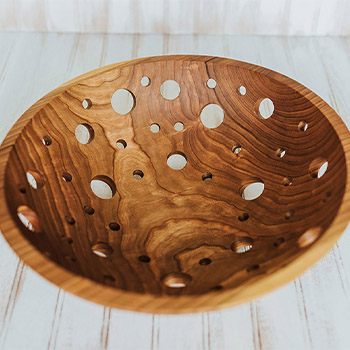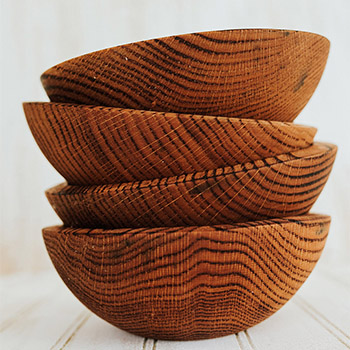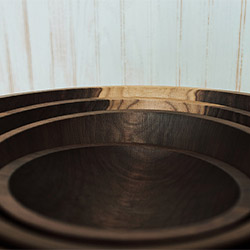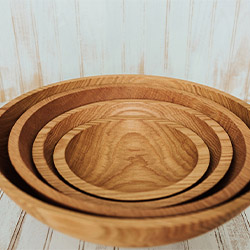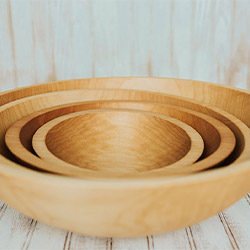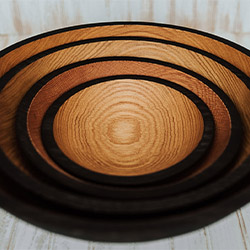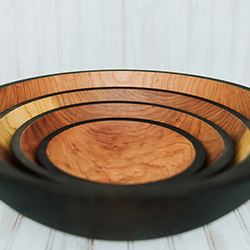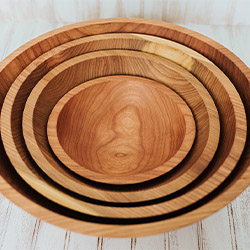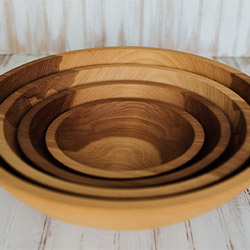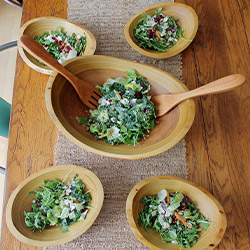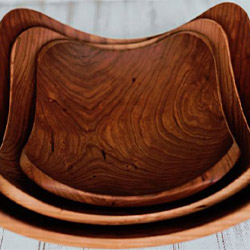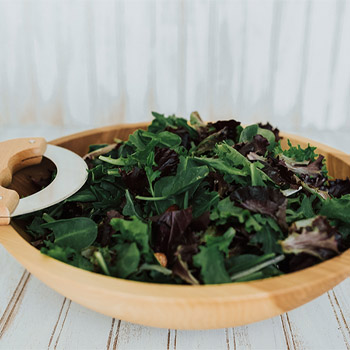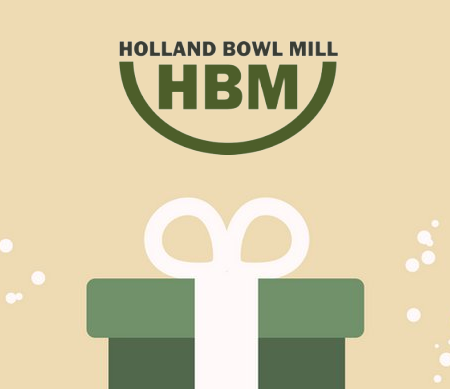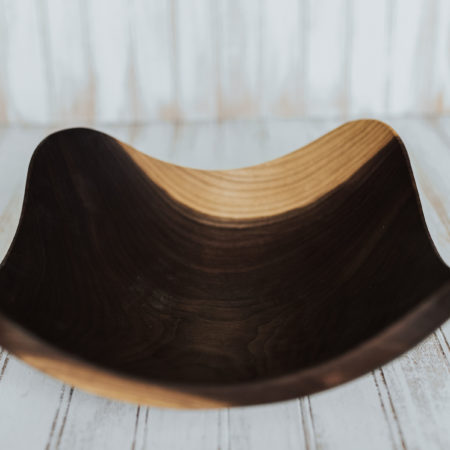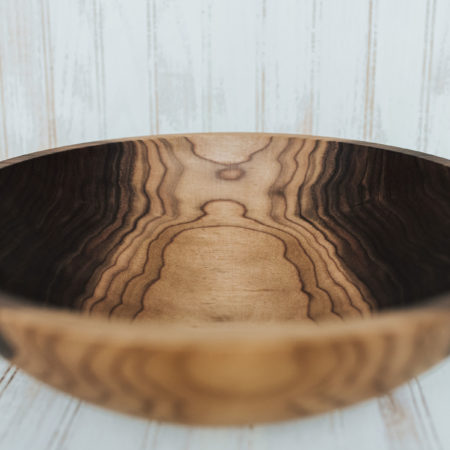Are Wooden Bowls Sanitary?
Are you wondering if wooden bowls are sanitary for your kitchen? Look no further! In this article, we will explore the hygienic properties of wooden bowls and delve into the potential bacterial risks they may pose.
You’ll discover the best practices for maintaining cleanliness while using wooden bowls and learn how they compare to other materials.
If you want to serve your loved ones with confidence, keep reading to find out if wooden bowls are the right choice for you.
Key Takeaways
- Wooden bowls can be as hygienic as plastic or metal counterparts.
- Proper cleaning and drying techniques are essential to prevent bacterial growth in wooden bowls.
- Choosing high-quality, food-grade wooden bowls that are properly treated and sealed is important for reducing bacterial risks.
- Wooden bowls offer several advantages, such as durability, sustainability, easy cleaning, and resistance to odor retention.
The Hygienic Properties of Wooden Bowls
Wooden bowls can be just as hygienic as their plastic or metal counterparts. When it comes to wooden bowl maintenance, it’s important to keep them clean and properly cared for to ensure food safety.
First, always wash your wooden bowl with warm soapy water after each use. This will help remove any food particles or bacteria lingering on the surface. Gently scrub the bowl with a soft sponge or cloth, paying close attention to any crevices or corners where dirt can accumulate.
After washing, make sure to thoroughly dry the bowl to prevent moisture from seeping into the wood. Moisture can lead to the growth of bacteria and mold, so it’s essential to let the bowl air dry completely. Avoid using a dishwasher or soaking the bowl in water for extended periods, as this can cause the wood to warp or crack.
To further enhance the hygienic properties of your wooden bowl, consider applying a food-safe finish or oil. This will help seal the wood and create a protective barrier against stains and odors. Be sure to choose a finish or oil specifically designed for wooden kitchenware.
Regular maintenance is key to preserving the hygiene of your wooden bowl. Periodically inspect the bowl for wear or damage, such as cracks or splintering. If you notice any issues, replacing the bowl to ensure food safety is important.
Exploring the Potential Bacterial Risks of Wooden Bowls
If you’re concerned about the hygiene of using wooden bowls, it’s important to understand the potential bacterial risks they may pose. While wooden bowls have been used for centuries and have their own charm, it’s essential to consider their material safety and the possibility of food contamination.
Wood is a porous material, meaning it has tiny spaces that can absorb moisture and harbor bacteria. This can be a cause for concern, especially when serving food. Bacteria thrive in damp environments, and if not properly cleaned and dried, wooden bowls can become a breeding ground for harmful pathogens.
To ensure the safety of your guests and loved ones, it is crucial to follow proper hygiene practices when using wooden bowls. First and foremost, choose high-quality, food-grade wooden bowls that have been properly treated and sealed. This will help minimize the risk of bacteria seeping into the wood.
Additionally, always wash your wooden bowls with hot, soapy water after each use. Scrub them thoroughly to remove any food particles or residue that could harbor bacteria. Once cleaned, allow the bowls to air dry completely before storing them.
To further reduce the risk of contamination, consider using separate wooden bowls for different types of food, especially when dealing with raw meats or other perishable items. This will help prevent cross-contamination and ensure the safety of your meals.
Maintaining Cleanliness in Wooden Bowl Usage
To keep your wooden bowls clean and free from harmful bacteria, it’s important to regularly wash and thoroughly dry them after each use. Following simple food safety precautions, you can ensure that the wooden bowls you use to serve others are sanitary and safe.
When washing your wooden bowls, use mild dish soap and warm water. Gently scrub the surface with a soft sponge or cloth, removing any food residue. Rinse the bowls thoroughly with clean water to remove any soap residue. Avoid using abrasive cleaners or soaking the bowls for extended periods, as this can damage the wood.
After washing, it’s crucial to thoroughly dry the wooden bowls to prevent the growth of bacteria. Use a clean kitchen towel or paper towels to remove any excess moisture. Then, allow the bowls to air dry completely before storing them. Moisture can lead to mold and mildew growth, harming both the wooden bowls and the food you serve in them.
Proper storage methods also play a vital role in maintaining the cleanliness of your wooden bowls. Store them in a cool, dry place protected from excessive heat or humidity. Avoid stacking them on top of each other, as this can cause them to warp or crack. Instead, store them upright or place a soft cloth between each bowl to prevent scratching.
The Best Practices for Cleaning Wooden Bowls
By using mild dish soap and warm water, you can easily clean and maintain the cleanliness of your wooden bowls. Cleaning wooden bowls is important in ensuring their longevity and safety for food preparation. Here are some effective cleaning techniques and natural disinfectants to keep your wooden bowls in top condition:
- Gentle scrubbing: Gently scrub the wooden bowl with a soft sponge or cloth using mild dish soap and warm water. This will remove any food residue or stains without damaging the wood.
- Rinsing thoroughly: After scrubbing, rinse the bowl thoroughly with warm water to remove any soap residue. Make sure to rinse it well to avoid leaving any residue behind.
- Drying properly: After washing, dry the wooden bowl completely with a clean towel. It is essential to remove all moisture to prevent bacteria or mold growth.
- Applying natural disinfectants: To sanitize your wooden bowl, you can use natural disinfectants like vinegar or lemon juice. Simply apply a small amount onto the bowl’s surface and let it sit for a few minutes before rinsing and drying.
- Avoiding harsh chemicals: Harsh chemicals, such as bleach or abrasive cleaners, should be avoided as they can damage the wood and leave harmful residues.
By following these cleaning techniques and using natural disinfectants, you can ensure that your wooden bowls remain clean and safe for serving.
Comparing the Sanitary Benefits of Wooden Bowls to Other Materials
When comparing wooden bowls to other materials, it’s important to consider their sanitary benefits. Wooden bowls offer many advantages in terms of sanitation compared to other materials.
First, let’s talk about durability. Wooden bowls are known for their durability, which means they are less likely to crack or break than bowls made from glass or ceramic materials. This is important because cracks and breaks can harbor bacteria, making cleaning more difficult. With wooden bowls, you can have peace of mind knowing that they will last a long time and remain in good condition for serving others.
In addition to durability, wooden bowls also have a positive environmental impact. Unlike plastic bowls that contribute to landfill waste, wooden bowls are biodegradable and sustainable. By using wooden bowls, you consciously choose to reduce your carbon footprint and contribute to a healthier planet. Moreover, wooden bowls are often made from renewable resources, such as bamboo or acacia wood, which further adds to their environmental benefits.
When it comes to sanitation, wooden bowls are also easy to clean. The natural oils present in wood have antimicrobial properties that help inhibit the growth of bacteria and other pathogens. Simply washing the wooden bowls with warm water and mild soap is usually sufficient to keep them clean and safe. Additionally, wooden bowls are less likely to retain odors compared to bowls made from other materials, ensuring that the food you serve always tastes fresh and delicious.
Conclusion
Wooden bowls can be sanitary if they’re properly cleaned and maintained. While there is a potential risk of bacteria growth in the wood’s pores, regular cleaning with hot water and mild soap can help eliminate these risks.
Following best practices for cleaning wooden bowls is important to ensure hygiene. Overall, wooden bowls can be a safe and hygienic food preparation and serving option, offering a natural and stylish alternative to other materials.

